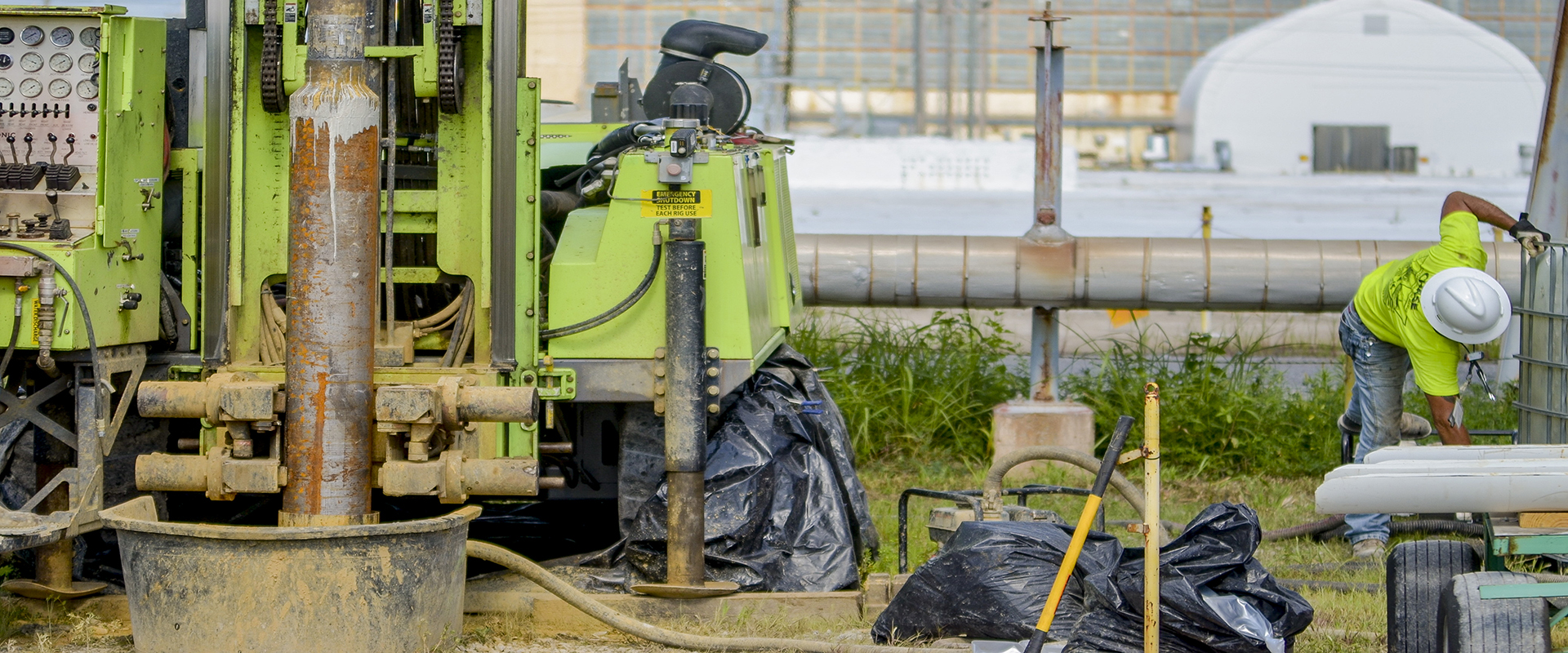Environmental Assessments & Monitoring Wells

In general, environmental studies are undertaken in accordance with the guidelines given by the British Drilling Association “Guidance Notes for the Safe Drilling of Landfills and Contaminated Land”. Where a study is combined with a geotechnical investigation the requirements of British Standards BS 5930: 1981 “Code of practice for Site Investigations” and BS 1377:1990 “Methods of test for Soils for Civil Engineering purposes” would also apply.
The majority of the environmental projects we have been involved with to date in UAE have been concerned with the sampling of soil and groundwater and installation of monitoring wells. Monitoring wells of 100 mm to 200 mm diameter have been drilled to depths of up to 16.5m depth, using either cable percussion or top drive rotary drill rigs. Locations have varied from operational factories and petrochemical plants, oil storage tanks, oil refineries, landfill sites to remote desert oil fields. Typically, the monitoring wells have been constructed using 50 mm or 100 mm nominal diameter locally manufactured uPVC screen and casing. However imported HDPE good screen and casing also can be used, particularly where petro-carbon contamination is expected.
Drilling methods used have varied from conventional cable percussion boring, hollow stem auger and solid stem auger drilling. Soil samples have been obtained from boreholes using conventional standard penetration test “split spoon” samplers either 0.5m or 1m long. The 1.0m long sample obtained is retained within a clear plastic liner within the sampling tool, which can either be split on site for examination and / or sub-sampling, or can be sealed and capped for transportation to the laboratory. With this system, a drop hammer (or SPT hammer) is used to simultaneously drive the sampler tube into the soil.

It is recognized that with environmental studies the introduction of contaminants from the rigs and tools etc. has to be prevented at all times. Similarly, cross contamination between test points has to be avoided. Before starting a contract all the equipment used is checked to ensure that there are no oil or fuel leaks. The equipment, tools and casings are also subjected to cleaning using a hot water pressure washer. This process is repeated between each borehole or test pit. Where necessary cleaning areas have been established on sites, including the provision of a power supply for the pressure washer. Other cleaning procedures can be adopted where necessary, under the direction of the client’s or engineer’s direction. Where petro carbon contamination is suspected vegetable oils and greases are used to lubricate tool joints etc. Drip trays can be fitted under rigs in case of any leaks from the power plant or hydraulic lines. Re-fueling and maintenance would either be carried out off site or in a designated area.
National Laboratory, Dubai Branch, does not undertake analyses for contaminants but maintains contacts with specialist laboratories in the UAE where such work can be performed. These laboratories would supply the necessary sample containers, which, while on site, would be kept in cool boxes packed with crushed ice. Wherever possible samples are transported to the laboratory on the same day as sampling. Where this is not possible the samples would be stored in the cool boxes in an air-conditioned environment.

